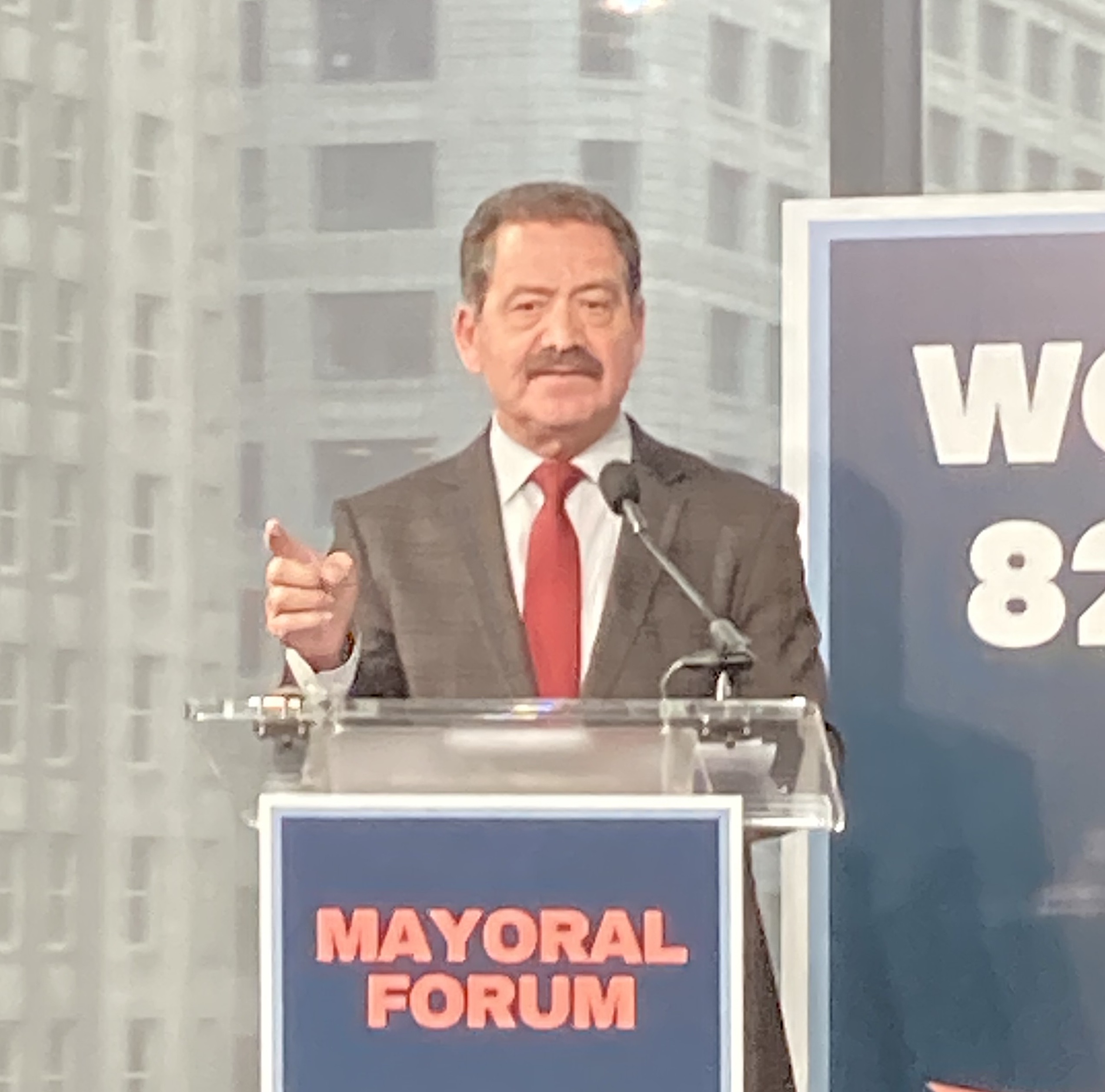The Chicago municipal election will be held on Tuesday, February 28, 2023. Early voting is available at two locations downtown and at one site in each of the 50 wards. Find your sample ballot on the Chicago Board of Elections website.
To help voters make an educated decision about the mayoral race, Streetsblog Chicago has been running a series of articles on candidates’ transportation platforms. As a 501(c)3 nonprofit, we do not endorse candidates. Mayoral campaigns were invited to share their candidates’ positions on walking, biking, transit, traffic safety, and public space matters. Read previous articles about Kam Buckner's, Ja’Mal Green’s, Lori Lightfoot’s, and Willie Wilson’s platforms, as well as a humorous overview of the hopefuls transit platforms as literal transit platforms.
Jesús "Chuy" García, currently serving as U.S. representative for Illinois' 4th Congressional District, is one of several candidate vying to be mayor of Chicago. According to his website, García has spent almost 40 years as "a progressive community leader and public servant in Chicago." In addition to his work in Congress he has also served on the Chicago City Council and the Cook County board.
On the "Transportation for All" page of his mayoral campaign website, García pointed to the CTA's reliability, safety, and cleanliness challenges under Mayor Lori Lightfoot's administration. He noted the problem of "ghost trains" and "ghost buses," when the Transit Tracker or a navigation app says a run is approaching is arriving, only to have it disappear from the screen before it shows up because there was no one available to operate it. In addition, he talked about how "staffing shortages have led to fewer buses and trains, unclean conditions, and increased crime." He also noted that the system is only being kept "afloat" by federal grants that are scheduled to run out next year.
Garcia stated that "public transit must be a priority." Once he takes office, he said, he plans on working with the CTA, and the housing, transportation, and planning departments to "integrate CTA service and planning with city needs and priorities." The goals would be to restore staffing levels, improve bus services, improve social services for the homeless, and build more dense housing near transit.
García also endorsed the south Red Line extension, and called for extending the Blue Line beyond O'Hare; creating a connector line between Midway and O'Hare; building bus rapid transit routes; and linking all CTA rail lines with a "circle line."
In addition, García stated that "transit equity must be a priority." He noted that people who live in disenfranchised neighborhoods rely on public transit the most. To that end, García said he plans to return the city to its pre-2020 transit service levels, explore reduced fares, advocate for full fare integration, and ensure that the CTA meets its goal of making all 'L' stations wheelchair accessible. He said the "Mayor's Office for People with Disabilities will convene a comprehensive design effort for new developments that builds in accessibility in public transportation rather than correct for it after the fact."
García's also stated that "transportation infrastructure goes well beyond public transit." He said he would work with "transportation planners, stakeholders, and transportation activists to build a comprehensive network of protected bike lanes that allows every citizen to traverse the city." He would also set annual goals for the construction of bus and bike lanes while expanding the recently passed Smart Streets Pilot Ordinance, which allows for increased enforcement of bus and bike lanes, to include the entire city the entire city.
Another statement on García's transportation platform is that "safe streets is a goal that requires good policy, strong management, and public buy-in" to address Chicago's traffic fatality epidemic. García also said he would prioritize building pedestrian safety infrastructure to increase the visibility of people walking and calm traffic. He also expressed interest in lowering Chicago's current 30 mph default speed limit.
García also stated that "success requires strong partnerships at the state and federal Level." In order for that to happen, he would go to "Washington D.C. and Springfield to support reforms that will guarantee great service and sustainable funding." He said he would also improve coordination between the CTA, Metra, and Pace. García said he would also work to promote the use of clean energy vehicles; encourage a regional approach to transit; implement congestion pricing measures; and invite transit workers to serve on the CTA Board.
Read García's transportation platform here.

Did you appreciate this article? Please consider making a tax-deductible donation to help fund Streetsblog Chicago's next year of publication. Thanks!




